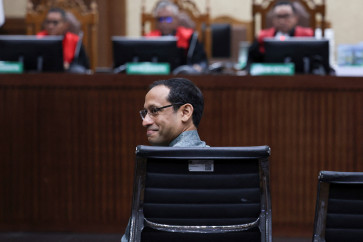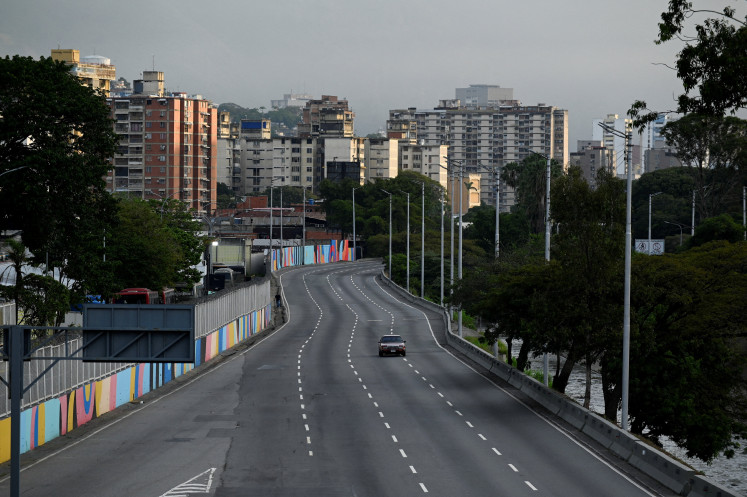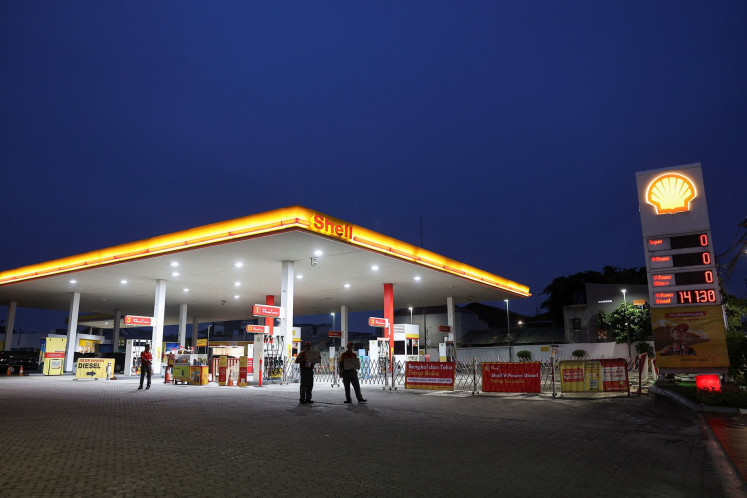Popular Reads
Top Results
Can't find what you're looking for?
View all search resultsPopular Reads
Top Results
Can't find what you're looking for?
View all search resultsJakartans lacking access to clean water
Triyanto, a 28-year-old Kemanggisan resident in West Jakarta, said he did not have problems getting access to clean water for daily use
Change text size
Gift Premium Articles
to Anyone
T
riyanto, a 28-year-old Kemanggisan resident in West Jakarta, said he did not have problems getting access to clean water for daily use.
“My house is equipped with a well to access groundwater and we also have piped water,” he said.
He added, however, that the usage was a bit complicated.
“We mostly use groundwater for bathing and laundry. We only use the piped water if the water pump is broken,” he said.
He said the family members preferred using groundwater because it was cleaner than from the pipe, the water of which was brownish. “Although the groundwater is clean, we cannot use it for drinking and cooking,” he said, adding that he bought bottled water for those purposes.
He said although he rarely faced water scarcity, he hoped that the quality would become better.
“I hope that [one day] our groundwater or piped water could be used for cooking and drinking,” he said.
Like Triyanto, many residents in Jakarta usually have alternative solutions to fulfill their needs for clean water. Some even have to spend more.
Residents in North Jakarta, for example, who do not have access to piped water and their groundwater is heavily polluted, buy clean water from vendors for their daily needs. A household can spend Rp 25,000 (US$1.92) per day during the dry season.
Although the survey conducted by the Saiful Mujani Research Center (SMRC) showed that 89 percent of 648 respondents said they were satisfied with the efforts of the city administration in providing clean water in Jakarta, many studies showed that Jakarta could be on the brink of a clean water crisis.
Although city-owned water operator PAM Jaya claimed that more than 50 percent of Jakarta gets piped water, 2015 data from the Central Statistic Agency (BPS) showed that only 39.6 percent of Jakarta’s residents use piped water for cooking while 36 percent of the population use artesian wells, 15.33 percent use bottled or refilled water and 7.62 percent use surface or rainwater.
The director of the Amrta Institute for Water Literacy, Nila Ardhianie, said that according to her calculations, the piped water system, currently operated by two private companies — PT PAM Lyonnaise Jaya for the western part of the city and PT Aetra Air Jakarta for the eastern part — could only fulfill the needs of 35 percent of the population, while the remaining 65 percent rely on groundwater.
Nila said Jakarta had a population of 10.2 million people in 2015, as well as 3.1 million daily commuters.
“If we use the standard of the usage of water per person per day of 175 liters, it means that Jakarta needs 750 million cubic meters [m3], as well the annual non-domestic consumption of 195 million m3.
“It means the total need for water in Jakarta is 950 million m3, while both operators distributed only 31.1 million m3 last year,” she said.
Furthermore, the data, published in Indonesia’s welfare statistics, showed that 63.98 percent of Jakartans buy their drinking water from retail outlets, only 22.51 percent got their drinking water from pipes and 13.51 percent do not buy but use groundwater instead.
The study conducted by the Groundwater Conservation Agency at the Energy and Mineral Resources Ministry revealed that the groundwater quality in Jakarta was substandard.
The agency studied monitoring wells in 85 locations and only 16 locations met quality standards.
Agency head Muhammad Wachyudi Memed said the groundwater quality in Jakarta was generally bad. “Samples from the north, west and east parts of Jakarta contain salt [NaCl], while those in the central Jakarta and Depok contain various contents,” he said, as quoted by kompas.com.
PAM Jaya president director Erlan Hidayat said that PAM used the 60 percent coverage because it was calculated comparing the number of installation times to the number of family members in one household.
“Eight hundred and thirty thousand installations times six people,” he said, referring to the average number of people in a household.
He said the coverage of 60 percent made sense after adding installations in malls, hotels and apartment buildings, which each counted as one installation but it would be for many more people.
Erlan said he acknowledged the groundwater quality in Jakarta was bad. “Most of our groundwater contains e coli bacteria as we do not control our septic tanks,” he said.
Erlan said that although he did not consider Jakarta to now be in a water crisis, it would go there if the city administration did not do anything to stop it.










